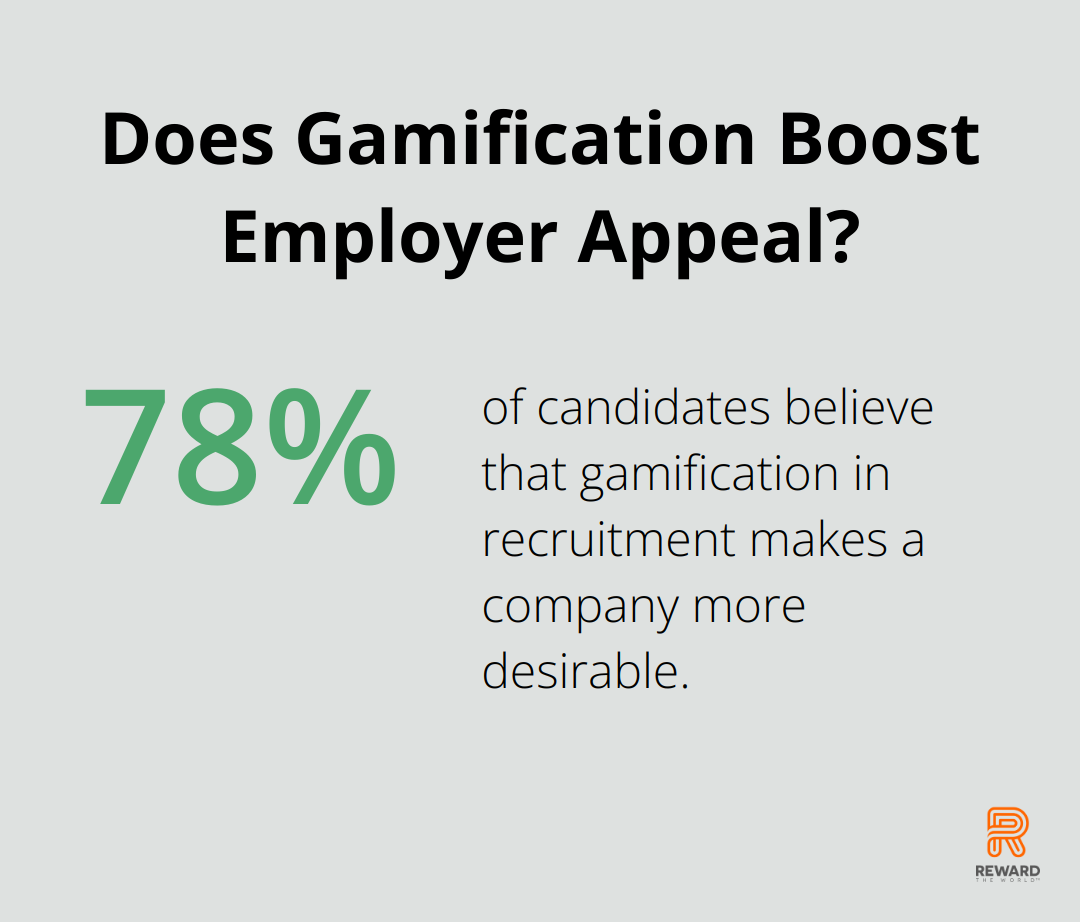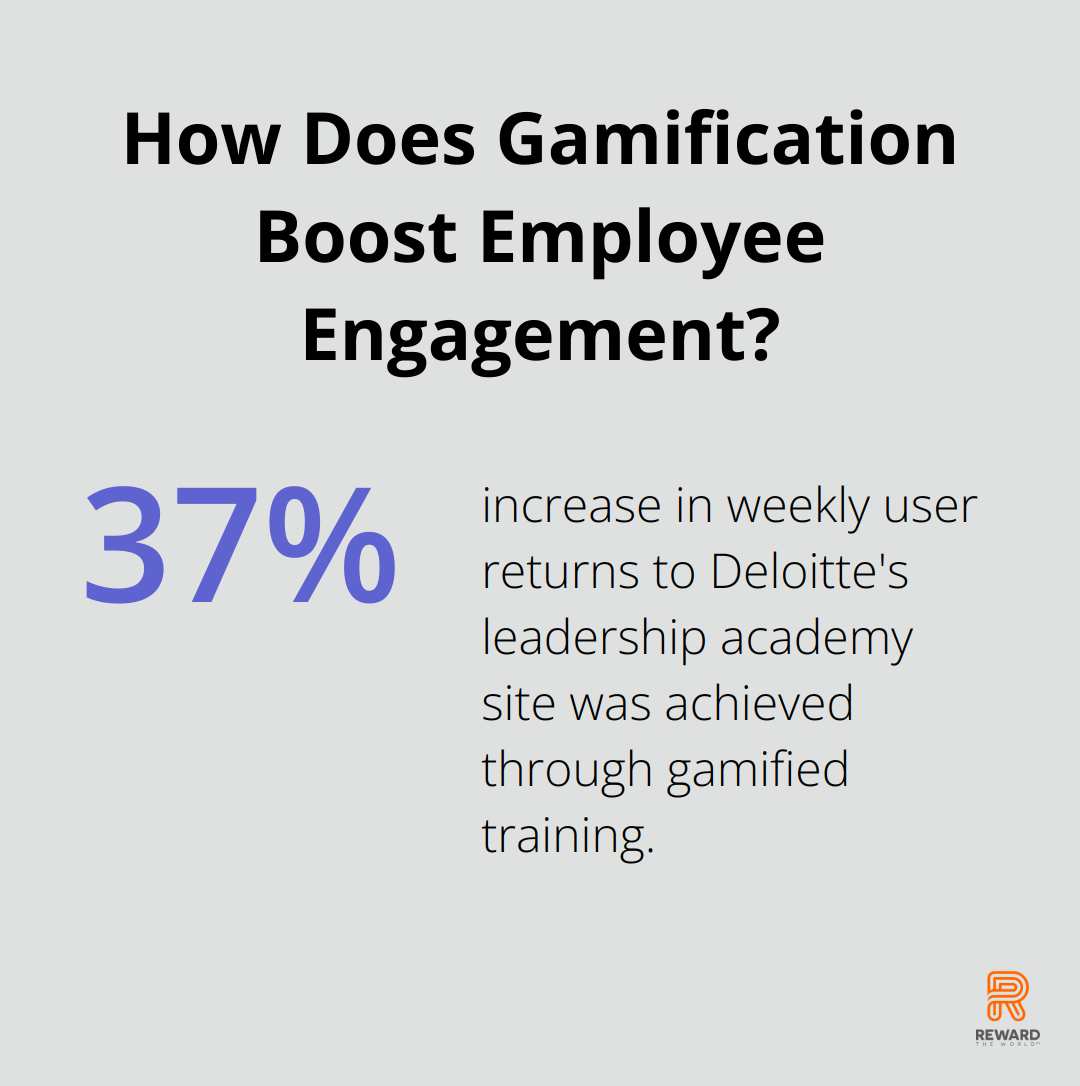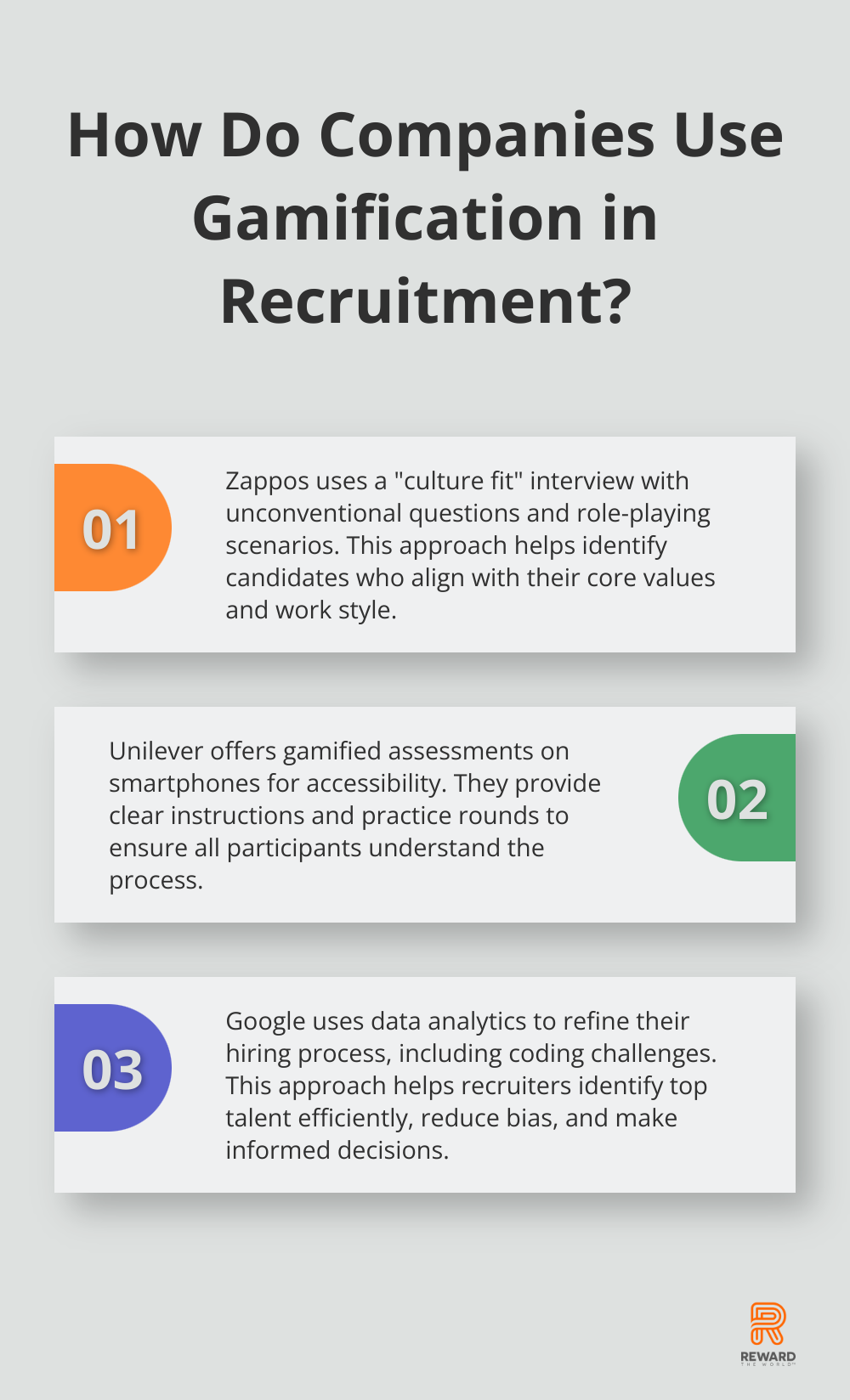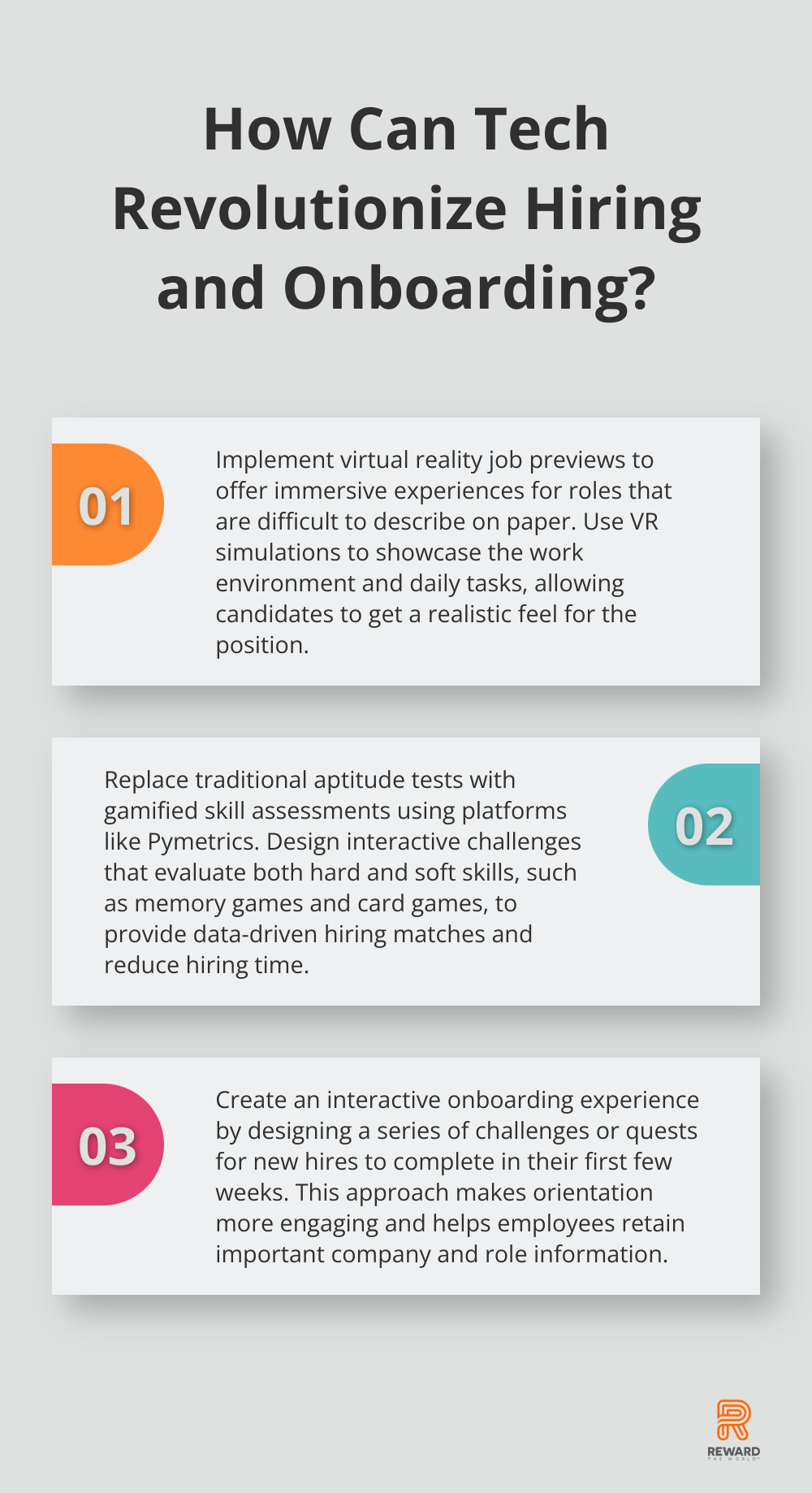
Gamification in talent acquisition is revolutionizing how companies attract and assess potential hires. At Reward the World, we’ve seen firsthand how this innovative approach can transform the recruitment process.
By incorporating game elements into hiring, organizations can engage candidates more effectively and evaluate their skills in unique ways. This blog post will explore how to harness the power of gamification to enhance your talent acquisition strategy.
What is Gamification in Recruitment?
Redefining the Hiring Process
Gamification in recruitment refers to the use of game design elements and mechanics in the hiring process to engage job seekers, enhance the candidate experience, and assess potential hires more effectively. This innovative approach transforms how companies attract, assess, and engage potential hires. It introduces challenges, point systems, and competitive elements to make recruitment more interactive and engaging.
The Impact on Employers and Candidates
For employers, gamification provides a unique lens into candidates’ skills and behaviors. It enables real-time assessment of problem-solving abilities, creativity, and cultural fit. A recent study found that “More than 78% of candidates” believe that some sort of gamification in a recruitment process makes a company more desirable.

Candidates also reap benefits from this approach. Gamified assessments reduce stress and offer a more accurate representation of abilities. Job seekers can showcase their skills in a dynamic environment, often gaining a better understanding of the role and company culture in the process.
Innovative Techniques in Action
Companies employ creative gamification strategies to enhance their recruitment processes. For example:
- L’Oréal’s “Reveal” game assesses candidates’ skills through virtual challenges, offering an engaging way to evaluate potential hires.
- Unilever uses a series of games to evaluate candidates’ soft skills and cognitive abilities, including traits like risk appetite and multitasking capabilities.
- Deutsche Bahn, a German railway company, implements virtual reality (VR) assessments, placing candidates in realistic work scenarios to demonstrate their skills in an immersive environment.
Balancing Gamification with Traditional Methods
While gamification offers numerous advantages, it’s essential to view it as a complement to traditional hiring methods rather than a replacement. The key lies in striking the right balance to create a comprehensive recruitment strategy that benefits both companies and job seekers.
As we move forward, let’s explore how to implement these gamification techniques effectively in various stages of the hiring process.
How to Gamify Your Hiring Process
Reimagine Job Applications
Transform your job application process with interactive challenges. Replace traditional forms with engaging tasks that assess candidates’ skills. For a marketing role, create a mini-game where applicants design a social media campaign strategy. This approach evaluates skills and provides a glimpse into the actual job.

A study revealed that 78% of applicants state that having gamification in the hiring process would make an employer more desirable. This statistic highlights the power of gamification to draw top talent.
Implement Virtual Reality Job Previews
Use Virtual Reality (VR) simulations to offer immersive job previews. This technology excels for roles that are difficult to describe on paper or in traditional interviews.
A global retail company took VR beyond recruitment and into onboarding, demonstrating the versatility of this technology in the hiring process.
Introduce Gamified Skill Assessments
Swap standard aptitude tests for gamified assessments to evaluate both hard and soft skills more engagingly. Platforms like Pymetrics create a gamified experience, where applicants can play memory games, card games, and other games. These tests evaluate candidates’ soft skills, providing data-driven hiring matches.
Unilever showcases the effectiveness of this method. Their gamified recruitment process evaluates candidates’ soft skills and cognitive abilities, reducing hiring time by 75% and saving about 100,000 hours of candidates’ time annually.
Create Interactive Onboarding Experiences
Expand gamification into the onboarding process. Design a series of challenges or quests for new hires to complete in their first few weeks. This strategy makes orientation more engaging and helps employees retain important company and role information.
Deloitte’s leadership academy demonstrates the power of gamified training. Their approach resulted in a 37% increase in weekly user returns to their site.
Align Gamification with Company Culture
As you implement these gamified elements, ensure they reflect your company culture and accurately represent job requirements. The goal is to create an engaging process that provides valuable insights into candidates’ abilities and potential organizational fit.
To take your gamification strategy to new heights, consider partnering with a platform like Reward the World. With its extensive user base and diverse reward options, Reward the World can enhance your gamified hiring process and boost candidate engagement even further.
Mastering Gamification in Recruitment
Tailor Games to Your Company Culture
Effective gamification in recruitment requires a strategic approach that aligns with your company’s goals and values. Design gamified assessments that reflect your organization’s unique culture. By aligning the gamification elements with the company’s culture and values, organizations can attract candidates who are a better cultural fit. If innovation is a core value, create challenges that test candidates’ ability to think outside the box. A tech company might develop a coding challenge that mimics real-world problems, while a marketing firm could design a social media campaign simulation.

Zappos, known for its strong company culture, uses a “culture fit” interview that includes unconventional questions and role-playing scenarios. This approach helps them identify candidates who align with their core values and work style.
Prioritize Fairness and Accessibility
Make your gamified assessments fair and accessible to all candidates. Consider potential barriers such as language, technology access, or disabilities that might affect a candidate’s performance.
Unilever offers their gamified assessments on smartphones. They also provide clear instructions and practice rounds to ensure all participants understand the process.
Measure and Refine Your Approach
Track metrics such as time-to-hire, quality of hire, and candidate satisfaction to gauge the effectiveness of your gamified recruitment process. Compare these to your pre-gamification metrics to assess impact.
Google uses data analytics to continuously refine their hiring process, including their famous coding challenges. By leveraging data generated from these gamified assessments, recruiters can identify top talent efficiently, reduce bias, and make informed decisions aligned with their recruitment goals.
Balance Game Elements with Recruitment Goals
While game elements can make the process more engaging, they should not overshadow the primary goal of identifying the best candidates for your organization. Try to strike a balance between fun and functionality in your gamified assessments.
Integrate with Existing Systems
For optimal results, integrate your gamified recruitment process with existing reward systems. This approach can significantly boost candidate engagement and reduce time-to-hire. If you’re considering a rewards platform for this integration, Reward the World offers a comprehensive solution with its massive 250 million-user base and instant reward delivery options.
Final Thoughts
Gamification in talent acquisition has transformed the hiring landscape. Companies now create engaging, efficient, and insightful recruitment experiences through interactive applications, virtual simulations, and gamified assessments. This approach benefits both employers and candidates, leading to reduced hiring times and improved candidate quality.

The future of gamification in recruitment will likely involve more AI, machine learning, and immersive technologies. These advancements will further personalize assessments and provide even more realistic job previews. Organizations that adopt these innovative strategies will attract, assess, and retain top talent more effectively.
Companies can enhance their gamified hiring processes with Reward the World. This platform offers a vast user base and diverse reward options to boost candidate engagement. As the job market evolves, those who embrace gamification in talent acquisition will build stronger teams and drive long-term success.
